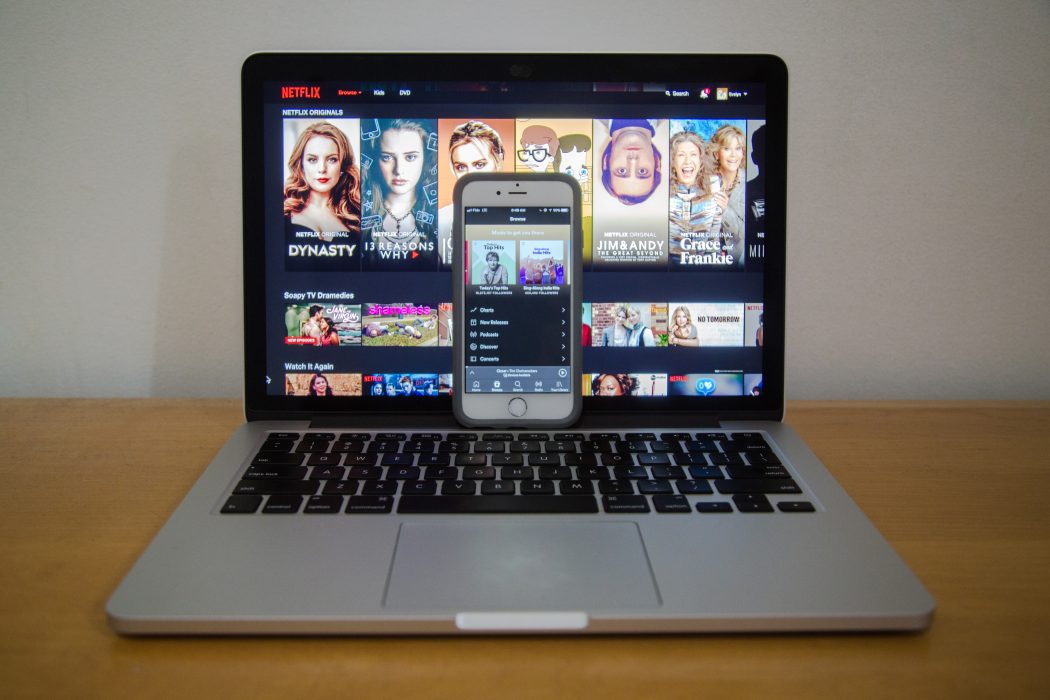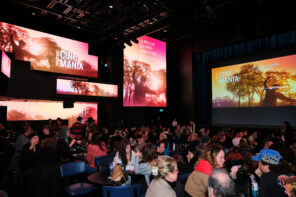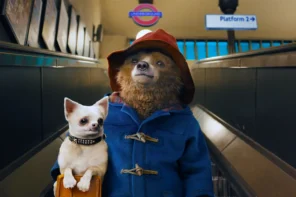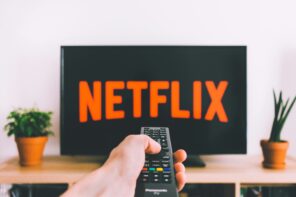Nostalgia has and always will be a weird thing to analyze. Why is it that we cling to certain objects from our past that seemingly defy the gravitational pull of technological progress, while we allow others to implode into their own black hole of irrelevance? Minh Berger and Anna Buksowicz place the polarized cases of the death of DVDs and the resurgence of vinyl alongside each other, exploring the place of ritual in each medium.
Rest in Peace, Blockbuster
By Minh Berger
Seven years ago, Blockbuster filed for bankruptcy and the video rental industry solemnly laid down its arms. The movie rental giant used to be the thing during the 90s and early 00s. Similar chains were scattered around the world and if you lived partly through the 90s, wherever you were, you have heard of or experienced the phenomenon yourself. Unfortunately, Netflix and iTunes emerged, catalyzing the industry’s downfall, planting the last nail in its coffin. This is understandable – why physically go rent movies, when you could just access them from the comfort of your couch? But going to Blockbuster was not a mundane task or a simple detour on the way home, it was more than that. Back in the day, going to Blockbuster was an experience.
Most of the time, you went to Blockbuster on the way home. It was part of your weekly schedule, inscribed in your routine. For some, it was right around the block. For others, it was a long detour. No matter the distance, the trip was worth it. Everyone had their own specific time, but it was often Fridays, just before the weekend. Going to Blockbuster was doubly thrilling for kids, marking both the end of the school week and an exciting weekend ahead. The reasons for going were many: sleepovers with friends, movie nights with your family, solo cartoon-watching sessions. Whatever made you step through Blockbuster’s automated glass doors, you knew you would spend quality time.
Entering a Blockbuster store was awe-inspiring – dozens of endless rows and shelves were spread across the rooms. The most satisfying part was the overload of choice: every movie you could think of was there, somewhere, hidden among the thousands of bright blue plastic boxes. You could enter knowing exactly what you were there for, or just be conscious that you wanted to watch a film. In both cases, the search was an exhilarating voyage across cinematic genres, filled with cultural discoveries and happy encounters. Strolling on the carpet floor among the rows of DVDs was often a way to stumble upon uncharted territories. You could have gone to Blockbuster with a movie in mind and left with something completely different.
If you lived partly through the 90s, wherever you were, you have heard of or experienced the phenomenon yourself
Of course, deeply interwoven with the discovery process was the tactile experience. You would come across an attractive title written in flashy font or a colorful cover art. In any case, you would lift the DVD case off the shelf. You would carefully inspect the front picture, scan for famous actors, read the summary, and examine the images. On a single row, you would make multiple stops, expecting to find the best movie possible and hoping to make the most out of your money. Taking, handling, and putting back DVD cases became automatic – of course, the goal was to absorb as much as possible. Blockbuster stores were huge – minutes easily turned into hours.
Lastly, the human interaction Blockbuster offered is something Netflix and its peers will never be able to replace. Employees strolled down the rows of DVDs and were there to help any customers in need. Didn’t know what to watch? Wanted to launch yourself into horror movies and start with the classics? Hunting down the last movie in vogue? These human movie encyclopedias were always there for you, with advice and personal recommendations. Of course, asking them was never a good idea, because you would go home with more DVDs than you needed and could possibly watch. You would enter Blockbuster as the sun was still shining and warming the streets. When you got out, a heavy plastic bag filled with blue and yellow cases, red and orange rays tinged the clouds and darkness was just a minute away. You knew your entire afternoon was gone, but it was all worth it.
Blockbuster’s death marked a major turning point in visual entertainment history. At a time where most people would rather pass time on social media or watch TV shows from the comfort of their homes, the return of Blockbuster or similar chains is extremely unlikely. Some rental video stores are still standing up across the world, bravely fighting against the crushing wave of indolence and technological innovation. These places are remnants of the DVD rental industry and important reminders that these stores provided us not only with fond memories of spending time with friends and family, but with tangible, intentional entertainment and access to an art form. For these reasons, Blockbuster deserves to be celebrated and remembered, even if we colour it with nostalgia. It may be time to move on, but Blockbuster, you are missed. May you rest in peace.
Don’t Call It A Comeback
By Anna Buksowicz
Music is a dimension unto itself – it is a medium of art operating primarily through soundwaves, but has the ability to command my every state of mind. Once I put my headphones on, I step into another world. The shy violins in “Cambridge, 1963” from The Theory of Everything’s soundtrack motivate me to finish assignments and revise for exams. When adulthood slaps me in the face, Bon Iver’s “8 (circle)” instantly releases the tears. The intangibility of music is inconsistent with its impact.
But music in its physical form is back in full force. There is something about flipping over my favourite Fleetwood Mac record, or lowering the stylus onto The 1975’s self-titled album in hopes of hearing the stellar intro song, that can’t be replicated by pressing a play button. Still, considering streaming’s ease of accessibility, why do I thumb through the vast collection of trendy vinyls every time I walk into Urban Outfitters?
Perhaps tangibility explains the musical experience. Our modern generation is obsessed with the conservation and display of memories. With the growth of social media, we are able to upload photos of parties, trips, and smiles, and thus keep them forever. They now don’t exist singularly in our minds, but also in the digital dimension of our Instagram feeds. Maybe for similar reasons, the resurgence of records conveys the importance of music.
Their current craze could also be rooted in nostalgia – vinyls have been around for about six decades. By continuing the cycle of inheriting, cherishing, then bequeathing these records, we long for the simpler times infused in the songs, the memories, and the object. Perhaps by purchasing our generations’ ‘bangers’ with the intention of passing them along, we try to mimic the effect our parents’ music taste had on us.
Additionally, many vinyl purists argue that LPs possess richer sound quality. According to them, pitching guitar sounds and lyrical singing is better expressed on analog, while modern, digital music is unfairly compressed to be played loudly on radio.
Considering streaming’s ease of accessibility, why do I thumb through the vast collection of trendy vinyls every time I walk into Urban Outfitters?
However, the vinyl revival is also part of broader, harmful trends in capitalism and consumerism. These days it feels like firms attempt to monetize anything and everything. By marketing sleek $300 turntables and snazzy $30 vinyls as a teenage necessity, firms in the music industry are able to make major profit. We consider ourselves as prisoners of commercialism, but in reality vinyls would not have reentered the market without demand. Most importantly, this trend only reinforces the fact that music has always been a luxury only some could afford. Although buying secondhand LPs and record players is cheaper than purchasing them from large retailers, listening to music on analog is nevertheless costlier than digesting it digitally.
The vinyl demographic includes individuals not only with larger budgets, but also those with more time and patience. Sitting down to listen to a record differs greatly from streaming music. The analog experience is loaded with additional tasks, including flipping the record over, cleaning it between each play, or simply having enough storage space for records and a turntable.
While it’s far easier to download a Spotify playlist and queue your favourite songs, listening to a full record without the simplicity of skipping between songs allows for its thorough digestion.Convenience breeds laziness, in our consumption of music as in everything else. With vinyls, we may be indulging in the highest form of music.
But save those cassette tapes and CDs, folks. Modernization is but reinvention.










